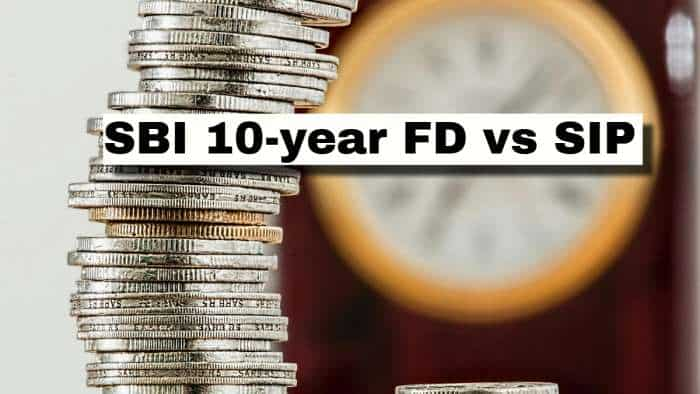Looking for a job? 40 lakh new ones coming; what you will need to get it and more
The Draft proposes to provide one Gbps connectivity to all Gram Panchayats of India by 2020 and 10 Gbps by 2022. It seeks to enable 100 Mbps broadband on demand to all key development institutions; including all educational institutions and provide fixed line broadband access to 50 percent of households among others.

Jobs creation in India is set to get a major boost as some 40 lakh new employment opportunities are likely to come up over the next few years! However, it will need certain skills. So read on, here is the full story. The Department of Telecommunications (DoT) has released Telecom policy draft – National Digital Communications Policy, 2018. The policy aims at creating 40 lakh new jobs by 2022 aside from attracting $100 billion investment in the sector. And yes, it will also ensure broadband at speed of 50 Mbps for every citizen.
"As a result of the consolidation and several companies filing for bankruptcy and leaving the industry, there has been shrinkage in terms of jobs. But look at Reliance Jio. It has announced an increase in jobs by 80,000," said Rajan Mathews, DG, COAI. He added, "So, once Vodafone and idea will come out with their joint venture they are looking into additional areas like enterprise sales, IOT, machine to machine and cloud computing which will require folks with new skill sets. It's only a question of reskilling and retraining people. So the demand for the employable folks is going to increase because we expect the industry to grow."
Mathews also said, "Today we are at about 35 to 36 bn US dollars. We expect it to double in next 3 -4 years. Given that it means we will need more employees, people who are skilled with AI, big data analytics, people who can handle customer complaints and resolve them. These are all new skill-sets that we will have to be focusing on. It means demand for these skills will create additional jobs and the quantum of employment will go up".
The Draft also proposes to provide one Gbps connectivity to all Gram Panchayats of India by 2020 and 10 Gbps by 2022. It seeks to enable 100 Mbps broadband on demand to all key development institutions; including all educational institutions and provide fixed line broadband access to 50 percent of households among others.
"As far as the intent is concerned it is very good. But as I said the devil is in detail. How will it be completed? How will it be executed? What could be the hurdles? All of this needs to be seen," says BK Sanyal, a telecom expert who is also referred as ‘Father of Internet & Data Services in India’. He added, "The most important thing to be seen in all this is, with what kind of technologies can you reach people. If it is fibre, then it cannot go everywhere. And even if it can go, it may take time. This vision says that everyone should get broadband by 2022. The govt needs to use the technology in an unbiased manner to take broadband to every citizen as it has aimed. It should frame the licensing and regulatory framework accordingly".
Significantly, the policy wants to ensure connectivity to all uncovered areas of the country and achieve ‘unique mobile subscriber density’ of 55 by 2020 and 65 by 2022.
"First time it has been recognised in policy that digital is very important. There are 3 pillars of it i.e. connect India, propel India and secure India. Connect India means coverage till the last mile in far-flung areas. This policy is a very elaborate policy," says Pankaj Mohindroo; the founder and National President of Indian Cellular Association. He added, "It will help in increasing communications. High-quality services will be offered like we are moving towards 5G. Quality of service will be improved. He added, "There are will be a flow of investments in the sector. So there will naturally be an impact on the consumers as there will be more services, rates will be lesser and it increase the sale of smartphones".
It also proposes to address woes of the Telecom sector by reviewing licence fees, spectrum usage charges, and universal service obligation fund levy for enhancing ease of doing business in the sector.
The policy also aims to enhance the contribution of digital communications space to 8 per cent of the country’s GDP from about 6 per cent last year. It recognises the importance of continued improvement in the regulatory framework for attracting investments and ensuring fair competition, to serve the needs of the people.
Get Latest Business News, Stock Market Updates and Videos; Check your tax outgo through Income Tax Calculator and save money through our Personal Finance coverage. Check Business Breaking News Live on Zee Business Twitter and Facebook. Subscribe on YouTube.
RECOMMENDED STORIES

LIC Saral Pension Plan: How to get Rs 64,000 annual pension on Rs 10 lakh one-time investment in this annuity scheme that everyone is talking about

Rs 1,500 Monthly SIP for 20 Years vs Rs 15,000 Monthly SIP for 5 Years: Know which one can give you higher returns in long term

LIC Saral Pension Plan: How much should you invest one time to get Rs 64,000 annual pension for life?

Income Tax Calculations: What will be your tax liability if your salary is Rs 8.25 lakh, Rs 14.50 lakh, Rs 20.75 lakh, or Rs 26.10 lakh? See calculations

8th Pay Commission Pension Calculations: Can basic pension be more than Rs 2.75 lakh in new Pay Commission? See how it may be possible

SBI Revamped Gold Deposit Scheme: Do you keep your gold in bank locker? You can also earn interest on it through this SBI scheme
01:08 PM IST











 Average salary hike projected to be 9.4% in 2025: Report
Average salary hike projected to be 9.4% in 2025: Report  Innovative Job Pitch Wins Founder's Heart; Candidate offers Rs 41,000, takes 7-day challenge
Innovative Job Pitch Wins Founder's Heart; Candidate offers Rs 41,000, takes 7-day challenge  Insecure jobs can increase early death risk among employees: Study
Insecure jobs can increase early death risk among employees: Study 73 per cent job seekers prefer large corporates over start-ups: Report
73 per cent job seekers prefer large corporates over start-ups: Report Good News! Hiring activities up ahead of festive season, 13% YoY growth recorded - Report
Good News! Hiring activities up ahead of festive season, 13% YoY growth recorded - Report